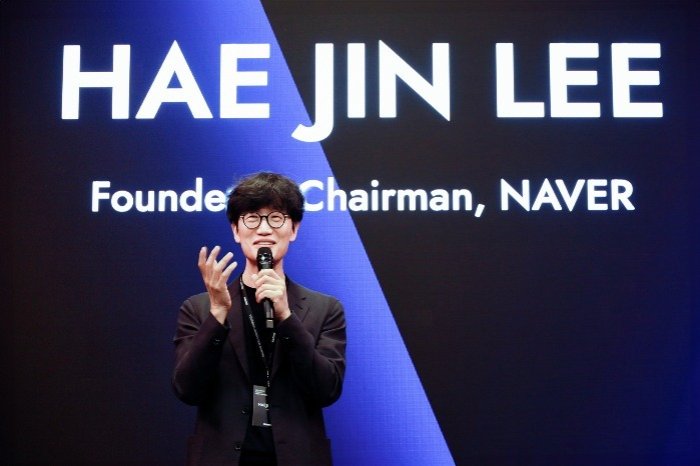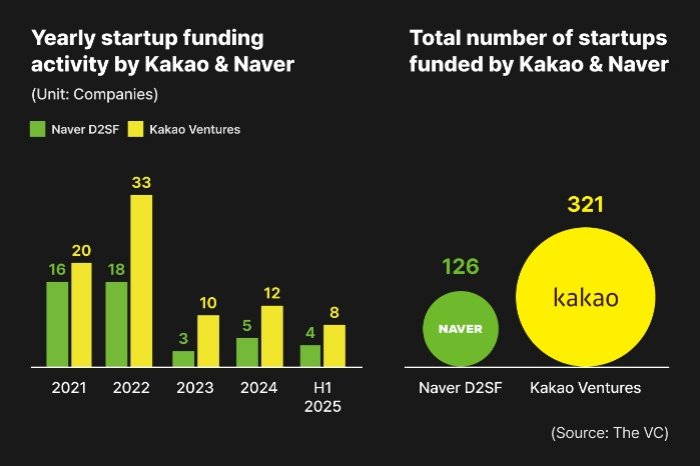Brand Stories
Antibody Discovery with AI: Faster, Smarter Drug Design

Artificial intelligence (AI) and machine learning (ML) are having a significant impact on how the biopharma industry develops new therapeutic antibodies. What historically has been a slow, trial-and-error-based process, mostly carried out at a lab bench, is now becoming a fast, data-driven discipline using in silico research methods and computational power.
The impact of AI is seen at the earliest stages of antibody discovery, giving researchers the ability, for example, to screen millions of antibody sequences and predict key properties like diversity in antibody sequences, number of unique variants available for screening, and panning and selection, accelerating the early stage of the drug discovery pipeline.
Thanks to iterative loops, where in silico predictions guide wet lab experiments and lab results improve the models, researchers can achieve higher precision and efficiency in therapeutic development.
At the heart of this transformation is data. To be successful, AI models require high-quality, scientifically robust and well-managed training data, and while an increase in the use of synthetic data is helping to bridge data gaps, access to real-world data remains essential.1
It is for this reason that lab informatics tools, including electronic lab notebooks (ELNs) and laboratory information management systems (LIMS), are critical, acting as connectors across teams, technologies and data types, centralizing and contextualizing experimental data and enabling seamless integration with AI models. This approach creates a continuous feedback cycle where AI refines lab tests, and the results power the next round of predictions.
How AI is accelerating early stages of antibody development
While AI is having an impact across large areas of antibody discovery, there are three areas that are seeing some of the most exciting progress: structure prediction, antibody-antigen interaction modeling and optimization. Tools like AlphaFold2 and RoseTTAFold have demonstrated the ability to predict protein structures from amino acid sequencing, and while these were major steps forward, antibody discovery brings specific challenges, especially in the CDR regions that determine how they bind to antigens.2–3
However, new antibody-specific tools like IgFold are using language models trained on hundreds of millions of antibody sequences to speed up the identification of successful candidates.4
In antibody-antigen interaction modeling, we are beginning to see AI help us with the design of antibodies with high specificity for the target antigen. AI systems like AlphaProteo use a combination of structure prediction and deep learning to model how an antibody will interact with a target, often without knowing the precise binding site in advance, to generate new protein binders.5
One of the most exciting examples of this is the ESM-IF1 model developed by researchers at Stanford.6 This model does not rely on labeled experimental data sets but uses the 3D backbone of a protein structure to predict sequences that are likely to fold into shape. In one study, the team used ESM-IF1 to improve two SARS-CoV-2 antibodies. Although they tested only 30 variants, they achieved up to 25-fold improvements in neutralization potency and 37-fold increases in binding affinity, representing a completely different way of doing antibody optimization.
The third area where we are seeing AI positively impact antibody discovery is in optimization. Once researchers have identified a promising antibody, they need to improve binding strength and reduce off-target effects; this ensures it’s stable and, importantly, manufacturable.
Tools, such as the Protein Repair One-Stop Shop (PROSS), can optimize protein sequences by designing mutations while preserving function and improving structural stability.7 AI models can simulate mutation and screening cycles in silico.
Challenges to AI adoption in antibody discovery
With any transformative technology, there are a number of major hurdles to be addressed to make visible the important impact of AI in antibody discovery. The largest and most important of these is data.8 Scientific AI models rely on the data on which they are trained to be accurate, specific, and organized.
While there are enormous libraries of antibody sequences, that data is often missing structural or functional context that is required to ensure accurate predictions.9 Private data sets tend to be siloed across teams or restricted due to IP concerns, and public data sets are often broadly distributed and lack standardization. These issues make it harder to train AI models on robust data sets, an issue that is compounded with rare or novel targets where data is even more limited.
Another challenge is the complexity involved in AI models. Antibodies have incredibly diverse structures, particularly in relation to how they bind with other molecules, and that diversity creates complexity when modeling. This lack of transparency makes it harder for researchers to trust the output or to troubleshoot when things go wrong.
Furthermore, there is still a lag between in silico research and wet lab validation. While AI can identify or design thousands of candidates, the wet lab cannot scale at the same pace, and even with the improvements in high-throughput screening, there can be a bottleneck.
Ensuring AI success through lab informatics
To unlock the full potential of AI in antibody discovery, it is important to go beyond the models themselves to examine the infrastructure on which they depend, specifically modern platform-based lab informatics solutions. This is the digital backbone of a lab, including ELNs, LIMS, scientific data management systems (SDMS) and workflow tools, which collectively structure, capture and connect the diverse and complex data that is generated across biopharma R&D, from initial antibody screening to manufacturability.
Science-aware data is central to the efficacy of AI in research, but it’s not solely about the quantity of the data available; it’s important that the data is well annotated, consistent, contextual and accessible. It is essential that this data accurately reflects scientific and biological realities. A modern LIMS can ensure that experimental data, historically found in fragmented formats or with inconsistent metadata, is managed in a standardized environment that ensures it can be seamlessly integrated from the lab to the AI model.
Additionally, a modern lab informatics platform can help to address the bottleneck between in silico and the wet lab. Informatics platforms can help the lab to scale by automating data capture, managing experiment queues and integrating sample tracking with experimental results. This allows wet lab scientists to prioritize the most promising candidates early and minimize redundant experimentation.
A third key benefit is how lab informatics supports the lab-in-the-loop model, a concept that is central to how AI and experimental science can work together. In a lab-in-the-loop model, AI operates as part of a continuous cycle, generating hypotheses, informing experimental design and learning from the results. AI models can create a closed and intelligent feedback loop where real-world results guide in silico predictions.
Conclusion
From modeling structure and binding to optimization, AI is accelerating the science of antibody discovery as the industry shifts towards smarter and more data-driven workflows.
However, the real impact comes when AI is paired with the right lab infrastructure. Without high-quality and contextual data and the systems to manage it, there is a risk that AI cannot achieve its full potential. That is where modern lab informatics platforms excel. They form the digital backbone ensuring data integrity, traceability and scientific context. They reduce human error and ensure data are reproducible, which is key for training effective AI models.
Ultimately, it is the lab-in-the-loop model – where predictions guide experiments and outcomes inform the next round – that unlocks the full potential of AI in antibody discovery. It is not just about accelerating timelines but about enabling a smarter, more adaptive approach to drug discovery. With the right lab informatics foundation, AI becomes more than a tool – it becomes a catalyst for continuous improvement across the entire antibody development lifecycle.
Brand Stories
Credit cards that offer hotel perks: How they work and who should get one

Some cards are co-branded with hotel chains, while others provide broad travel benefits across multiple brands.
Cards with hotel benefits (as compiled by Paisabazaar)
HSBC Taj Credit Card offers 25% savings on Taj hotel stays, room upgrades, dining discounts, free night stays and Taj InnerCircle Platinum membership.
Marriott Bonvoy HDFC Credit Card provides Marriott Bonvoy Silver Elite status, free night awards based on spending milestones, and Marriott Bonvoy Points on hotel and travel spends.

American Express Platinum Charge Card includes memberships with loyalty programmes such as Marriott Bonvoy Gold Elite, Hilton Honors Gold Elite, Taj Epicure Plus and others. Cardholders get room upgrades, complimentary breakfasts, and special rates at luxury hotels including Oberoi and Lalit.
Axis Bank Reserve Credit Card offers memberships like ITC Culinaire, Accor Plus and Club Marriott. Benefits include free night stays, dining discounts, room upgrades, and exclusive offers at partner hotels.
HDFC Infinia Credit Card (Metal Edition) provides Club Marriott membership, discounts and offers at ITC Hotels, and higher reward points on travel bookings through SmartBuy.
ALSO READ | How luxury hotels in India are evolving insurance practices with modern needs
ICICI Emeralde Private Metal Credit Card gives Taj Epicure membership, reward points on hotel bookings via iShop, and options to redeem points for hotel vouchers.
Axis Atlas Credit Card allows cardholders to earn EDGE Miles that can be converted into hotel loyalty points with partners like Accor, Wyndham, ITC and Marriott.
Hotels say these co-branded card tie-ups help build guest loyalty.
KB Kachru, Chairman, South Asia, Radisson Hotel Group, says, “Co-branded credit card partnerships are a powerful lever in enhancing guest loyalty and encouraging repeat stays. These collaborations extend the reach of our loyalty program beyond the hotel stay, allowing members to earn points on everyday purchases—making engagement with the brand more frequent and meaningful.”
He adds that Radisson has partnered with American Express and is exploring more local tie-ups to expand its base in India.
Arjun Baljee, Founder of Iconiqa and President of Royal Orchid Hotels, says, “Co-branded card partnerships help hotels remain top of wallet by allowing guests to earn points not only during stays but also through everyday spends, strengthening their transactional connection with the brand.”
Both hotel groups note that guests are redeeming more points and free night vouchers than before.
According to Kachru, redemption rates have increased, especially for leisure trips and festive stays. Baljee says guests often use points and vouchers on weekends and staycations.
Such premium hotel credit cards are generally used by frequent travellers and high spenders who stay at partner hotels and spend enough to benefit from loyalty rewards. Whether to use one depends on how often a person travels, their spending habits and if they can make full use of the perks relative to the annual fee, experts say.
ALSO READ | From points to perks: What hotel loyalty programmes are and who should join
Brand Stories
Kakao, Naver step up global AI hunt amid fierce tech race

South Korea’s internet pioneers, Kakao Corp. and Naver Corp., are ramping up overseas investments in artificial intelligence startups, shifting focus to North America in a move that is raising concerns among domestic startups over tighter funding at home.
After a two-year lull, both companies have resumed active startup investing but with a markedly global tilt.
The pair, which respectively backed about 20 startups annually during 2021–2022, have since cut that pace by more than half, according to Seoul-based tracker The VC.
Now, their investments are skewed toward US-based companies developing next-generation AI technologies in hopes of tapping innovations that align with their core platforms or open up new growth paths.
AI IS A MUST FOR ANOTHER LEAP
According to the investment banking industry on Tuesday, Naver Cloud Corp., a cloud computing arm of Naver, recently led a Series A funding round for Urban Datalab, the developer of an AI medical platform, MeDiAuto, with its own investment of 3.5 billion won ($2.5 million).
Naver’s newly launched Naver Ventures also made its debut investment in TwelveLabs, a Silicon Valley-based startup with an unrivaled multimodal AI technology that has already attracted big-name backers, including Nvidia, Samsung Electronics Co. and Intel Corp.
“We are open to collaboration (between Naver and TwelveLabs) next year or later,” said Kim Sung-ho, head of Naver’s Immersive Media Platform team.
Naver’s renewed push into AI investing has gained further momentum since its founder Lee Hae-jin returned as chairman earlier this year.
“If David wants to beat Goliath, he must aim well with the right stone,” said Lee at a ceremony celebrating the opening of Naver Ventures, the company’s first dedicated overseas venture capital in Silicon Valley, last month. “We are in the middle of picking the right stone.”
In this analogy, Naver is the underdog battling US tech giants in the AI race.
Naver’s in-house corporate venturing (CV) team, D2SF, has also made a series of AI-focused investments this year.
It has invested in AI-powered logistics platform startup Techtaka; AI game developer Anchor Node; AI-supported autonomous driving technology developer whereable.ai; and multi-modal commerce AI startup Studio Lab.
Kakao has been similarly active in investing in AI companies.
According to The VC, Kakao Investment Co., Kakao’s venture investment arm, has recently invested 3 billion won in Seoul-based AI chip startup FurisosaAI Inc.
Its another venture capital company, Kakao Ventures Corp. has joined early-stage funding rounds of AI agent developer Tzafon and large language model startup Trillion Labs.
NORTH AMERICA EMERGES AS A NEW BATTLEGROUND
While the uptick in tech investment is a welcome shift after years of slowdown, Korean startups now worry they may be left behind.
Historically reliant on Kakao and Naver for early-stage capital, domestic startups fear the funding tide may be turning westward – just as global AI interest is surging.

Of five startups Naver D2SF has invested in 2024, three are US-based, including 3D content developer Claythis and YesPlz AI, a fashion-focused multimodal AI developer.
Kakao Ventures has also invested in FS2, a 3D AI chip design company led by MIT engineers; Oligo Space, an automated spacecraft design and production toolchain developer; and medTech startup Kompass Diagnostics.
To deepen its reach in the North American venture capital ecosystem, Naver opened D2SF’s US office in Silicon Valley last year and launched Naver Ventures in the global tech hub to scout growth-stage firms.
Kakao Ventures’ officials regularly visit the US once every two to three months to build ties with local VCs, engineers and researchers.
Investors see more room for upside in US startups than in their Korean counterparts, offering greater synergy.

“The ecosystem for tech-based startups is more mature in the US, and top US universities generate stronger pipelines of investable early-stage companies,” said an official from a Korean VC company.
The trend also reflects a strategic calculus, said industry observers.
Korean tech giants face less public scrutiny abroad compared to frequent domestic criticism over big tech firms’ aggressive M&A moves with startups after investment.
That’s prompting concern that capital could increasingly flow to overseas startups instead of bolstering the local tech scene.
“Startup funding is borderless,” said an official in the VC industry. “Without competitiveness to appeal globally, any startups won’t survive.”
Write to Eun-Yi Ko at koko@hankyung.com
Sookyung Seo edited this article.
Brand Stories
‘Cruising is booming:’ Why luxury hotel brands are launching lavish cruise ships | Exclusive

Ritz-Carlton and Four Seasons are two of the world’s most renowned and expensive and hotel companies.
But forget staying in their hotel rooms – they’re among the top travel brands taking to the water.
And Waldorf Astoria – which is owned by Hilton – is the latest travel firm to strike out, launching a luxury Nile cruise in 2026.
DEAL: Save hundreds on a Queensland holiday with Discovery Parks
More akin to mega yachts and much smaller than regular cruise ships these vessels hold just a few hundred cashed-up guests.
Ritz Carlton recently launched its third ship, Luminara, with an A-list filled party.
READ MORE: Why Orange is the ultimate winter escape you haven’t considered (but really should)
Models Kendall Jenner and Naomi Campbell, TV host Martha Stewart, and actors Orlando Bloom and Kate Hudson were among those invited to the extravagant party.
Outside of hotels, on-the-ground tour company Trafalgar announced it is also expanding into river cruising with two new ships, the Trafalgar Verity and Trafalgar Reverie, for sailings on the Rhine and Danube rivers, starting in April 2026.

Ted Blamey Principal at specialist cruise consulting firm CHART Management Consultants says there are many reasons all these firms want in on the water-bound holidays.
“The first is basically that cruising is booming, so it’s a great opportunity for experienced travel and accommodation companies to capitalise on,” he tells 9Travel.
“Second, I guess, would be, that these organisations, they have very powerful existing guest basis.
READ MORE: Hawaii is the most popular US destination for Aussies, as new figures show a major shift in travel

“They have a very significant number of past guests who are loyal to the brand, and love it, and why not offer them something new that will continue to get their loyalty and of course, earn revenues.
“I guess another reason is that these same people are open to new experiences.”
Meanwhile he said cruising is unique from a business point of view because guests are captive on the vessel much of the time.
And that means you can control their holiday – as well as retain much of the money they pay to be there.
READ MORE: Best time to visit Bali: How to avoid crowds, high prices and the rainy season

The new players are competing against other luxury cruise brands such as Crystal Crusies, Ponant, Explora Journeys, Azamara, Silversea, and Regent Seven Seas.
But this could be good for the whole industry Ted says.
“I think all of us in the industry have felt for years that competition is a good thing, it grows the market,” he says.

Even Orient Express, most famous for its lavish trains, is getting involved. It’s planning the world’s largest sailing ship, Orient Express Silenseas, for next year.
Smaller Swiss brand, Aman is also setting sail.
Meanwhile, images show the first vessel for Four Seasons won’t be anything like normal cruiser.
The yacht will have an extendable marina on both sides for water sports, swimming or simply posing for Instagram photos.

Captain Kate McCue has jumped ship from Celebrity Cruises to captain it.
But one thing all the vessels will have in common is that their high-net-worth guests can enjoy the finest things the world can offer.
That includes an almost one to one crew member to guest ratio, fine dining meals from top chefs and lavish suites with huge terraces.
Prices are not always widely advertised but run into the tens of thousands, making a trip something everyday Aussie cruises can only dream of.
-

 Brand Stories2 days ago
Brand Stories2 days agoBloom Hotels: A Modern Vision of Hospitality Redefining Travel
-

 Brand Stories1 day ago
Brand Stories1 day agoOlive Living: India’s Intelligent, Community-Centric Hospitality Powerhouse
-

 Destinations & Things To Do3 days ago
Destinations & Things To Do3 days agoUntouched Destinations: Stunning Hidden Gems You Must Visit
-

 AI in Travel3 days ago
AI in Travel3 days agoAI Travel Revolution: Must-Have Guide to the Best Experience
-

 Brand Stories3 weeks ago
Brand Stories3 weeks agoVoice AI Startup ElevenLabs Plans to Add Hubs Around the World
-

 Brand Stories2 weeks ago
Brand Stories2 weeks agoHow Elon Musk’s rogue Grok chatbot became a cautionary AI tale
-

 Asia Travel Pulse3 weeks ago
Asia Travel Pulse3 weeks agoLooking For Adventure In Asia? Here Are 7 Epic Destinations You Need To Experience At Least Once – Zee News
-

 AI in Travel3 weeks ago
AI in Travel3 weeks ago‘Will AI take my job?’ A trip to a Beijing fortune-telling bar to see what lies ahead | China
-

 Brand Stories3 weeks ago
Brand Stories3 weeks agoChatGPT — the last of the great romantics
-

 Brand Stories2 weeks ago
Brand Stories2 weeks agoHumans must remain at the heart of the AI story



You must be logged in to post a comment Login